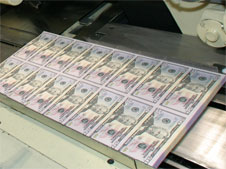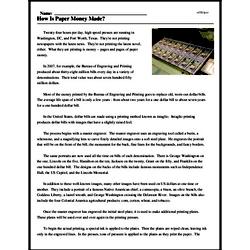How Is Paper Money Made?
Twenty-four hours per day, high speed presses are running in Washington, DC, and Fort Worth, Texas. They're not printing newspapers with the latest news. They're not printing the latest novel, either. What they are printing is money -- pages and pages of paper money.
In 2007, for example, the Bureau of Engraving and Printing produced about thirty-eight million bills every day in a variety of denominations. Their total value was about seven hundred fifty million dollars.
Most of the money printed by the Bureau of Engraving and Printing goes to replace old, worn-out dollar bills. The average life span of a bill is only a few years - from about two years for a one dollar bill to about seven years for a one hundred dollar bill.
In the United States, dollar bills are made using a printing method known as intaglio. Intaglio printing produces dollar bills with images that have a slightly raised feel.
The process begins with a master engraver. The master engraver uses an engraving tool called a burin, a whetstone, and a magnifying lens to carve finely detailed images onto a soft steel plate. He engraves the portrait that will be on the front of the bill, the monument for the back, fine lines for the backgrounds, and fancy borders.




